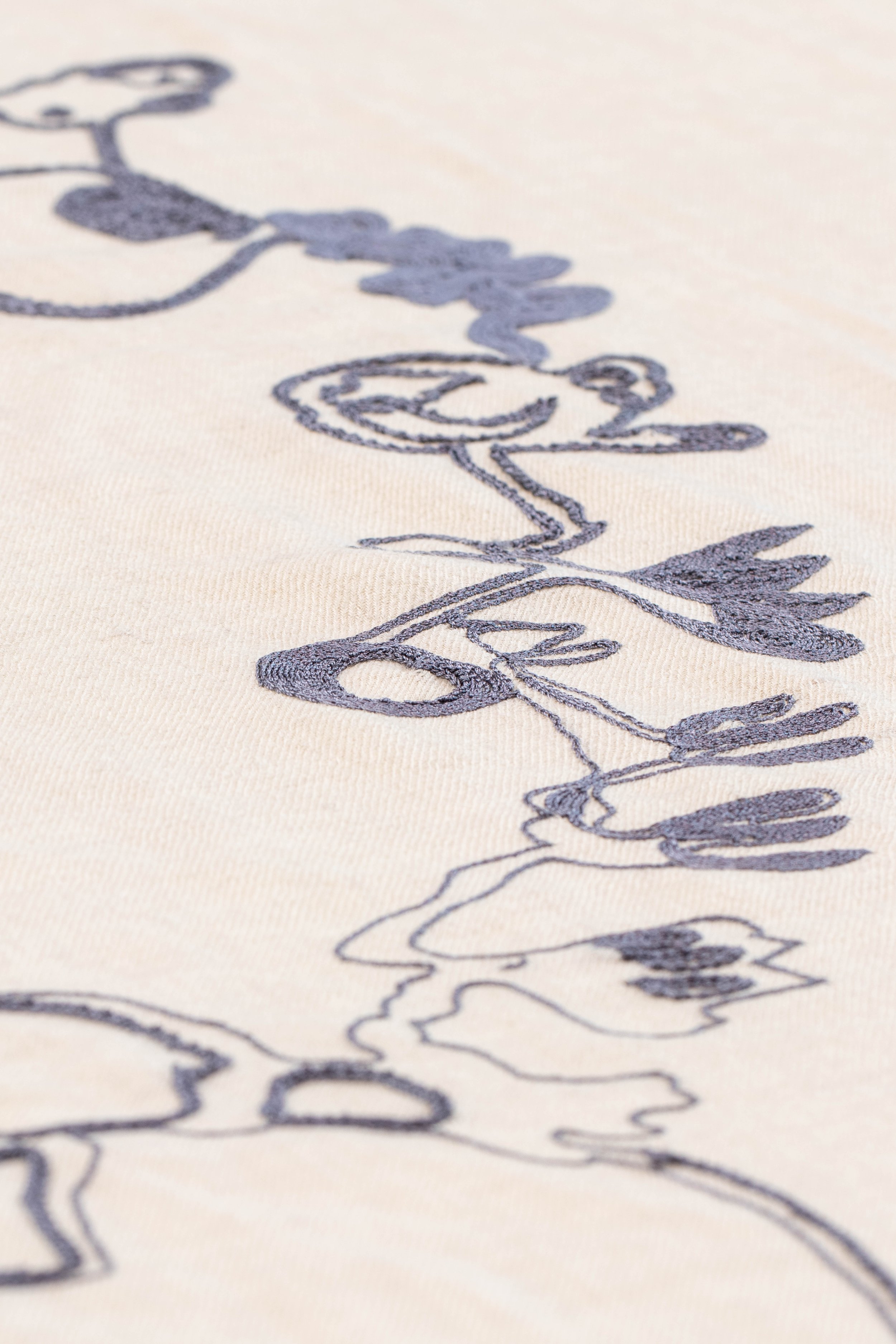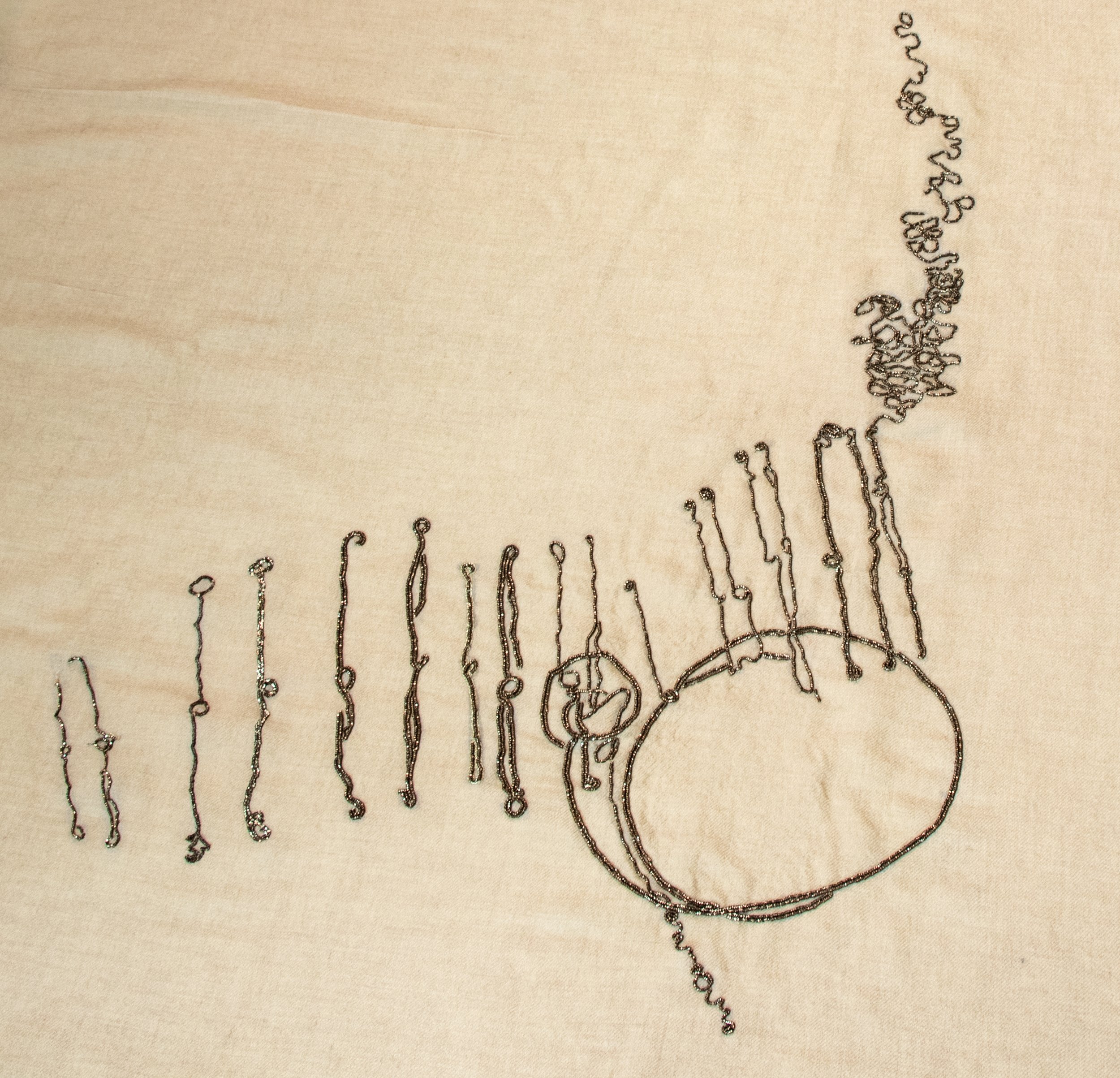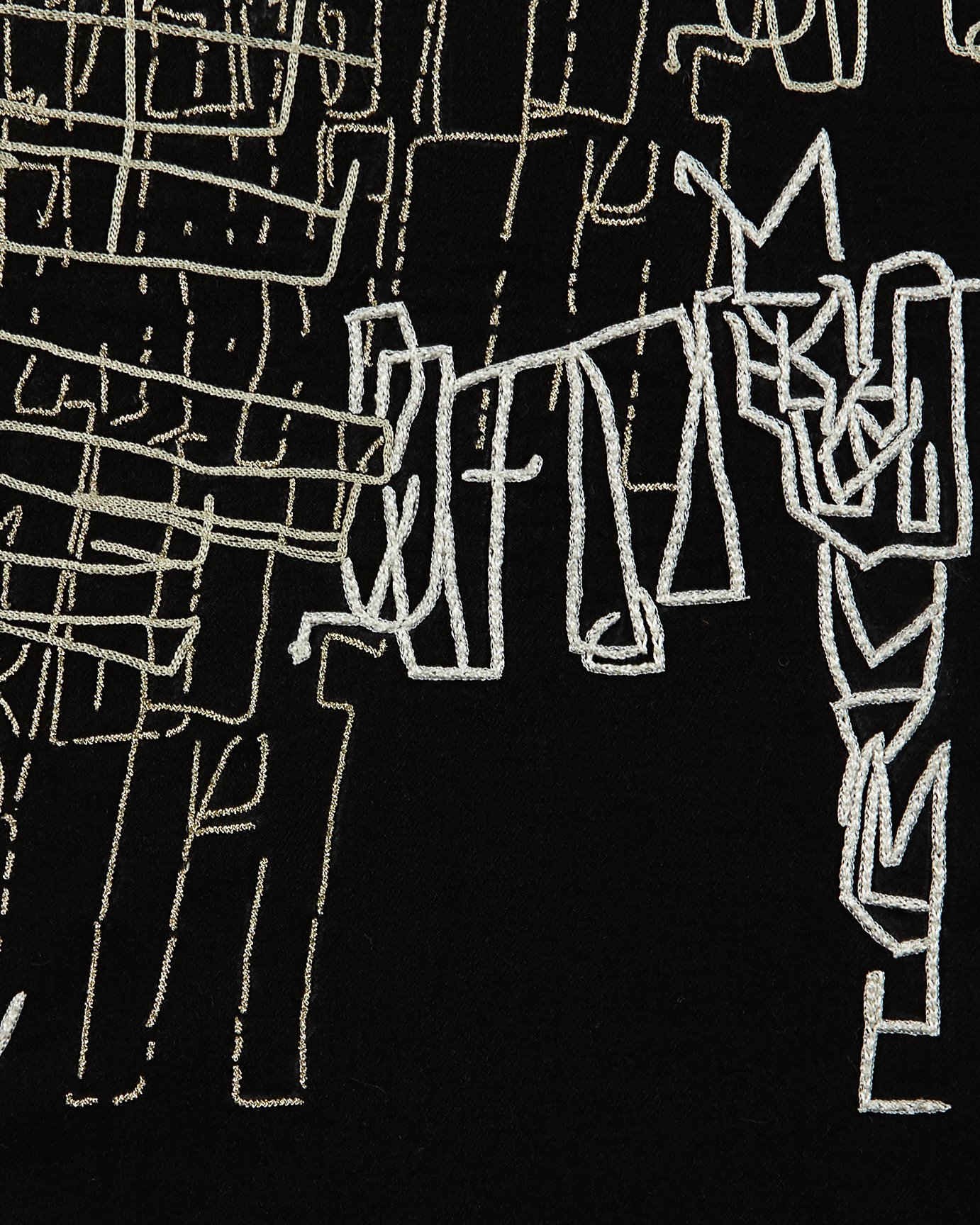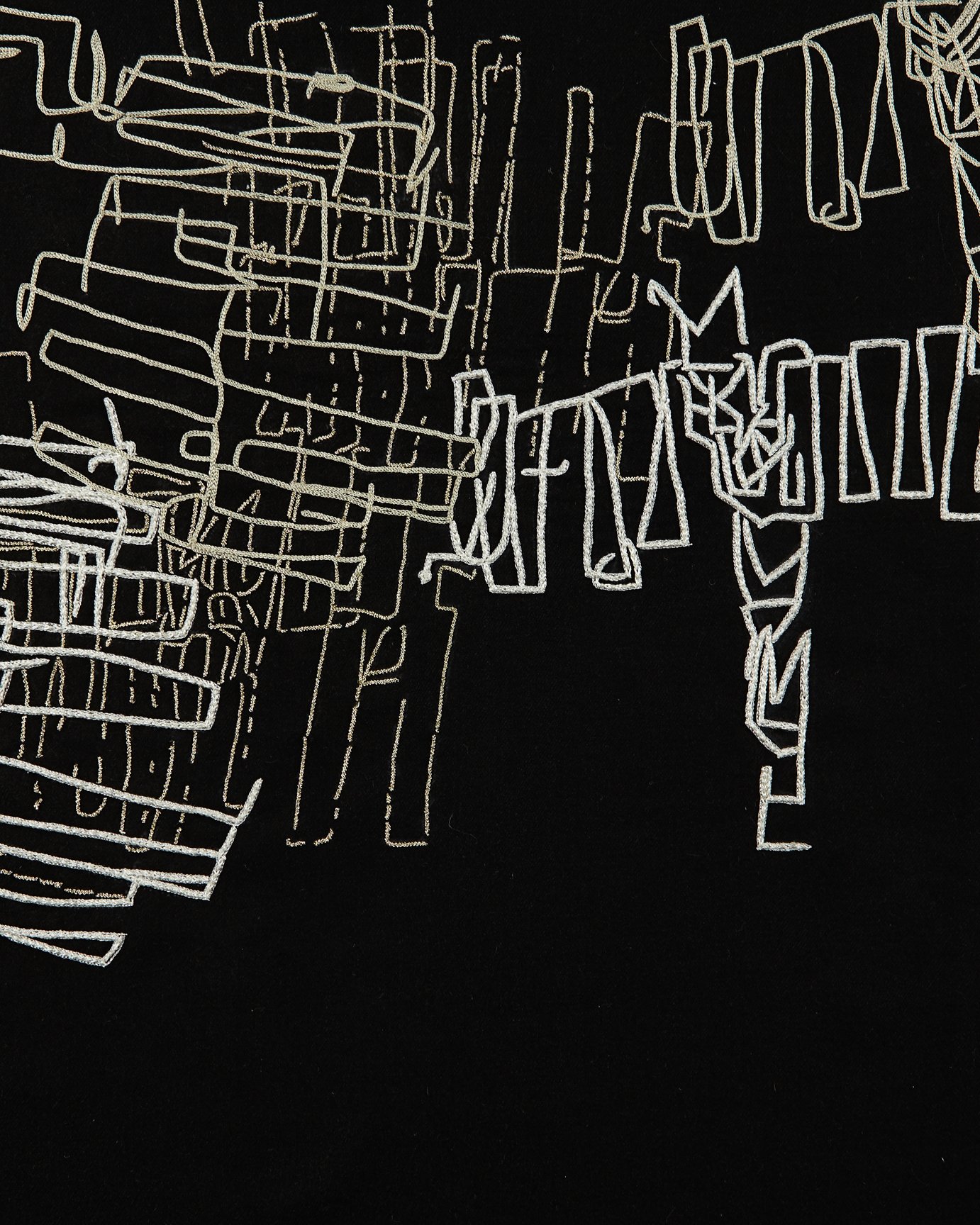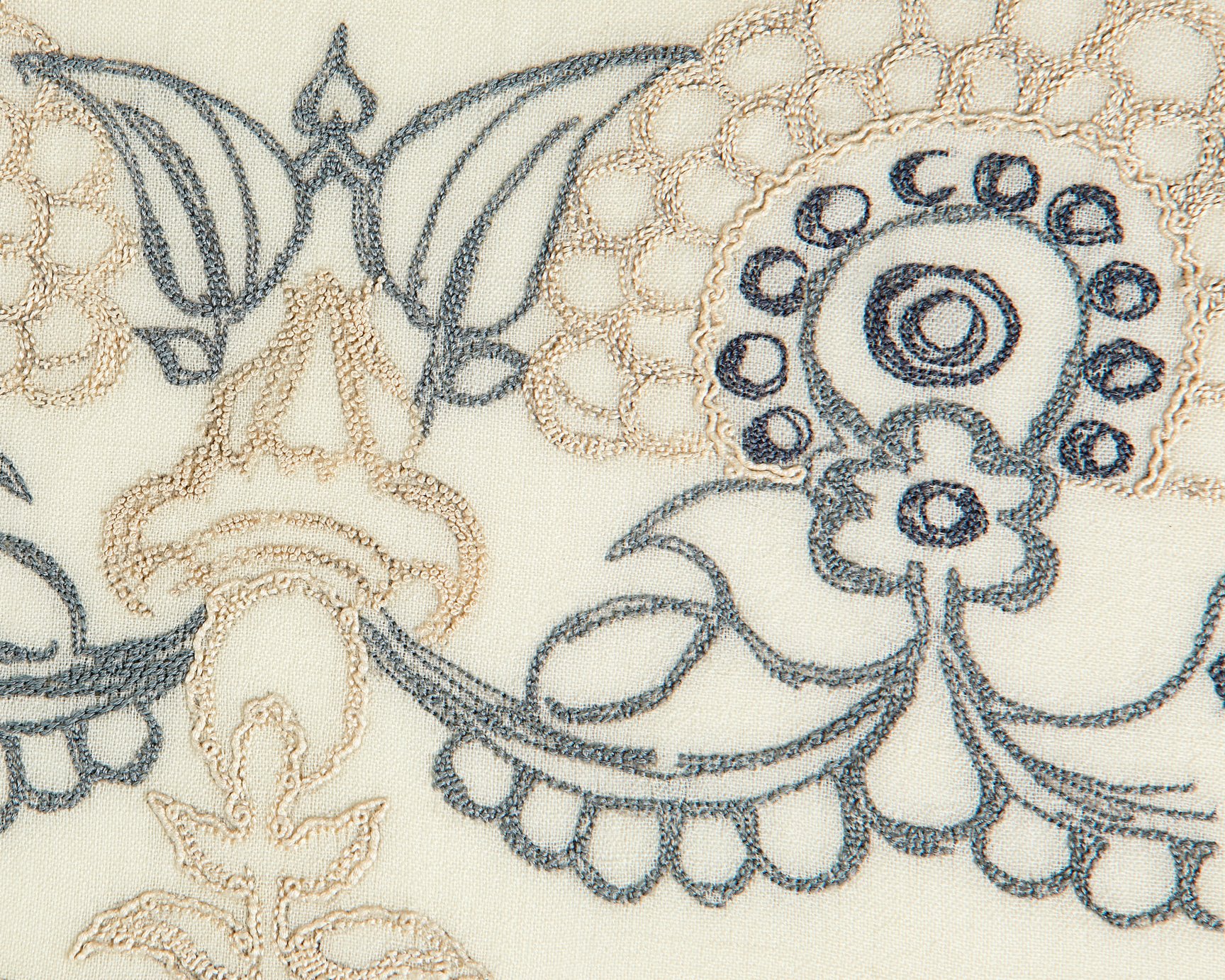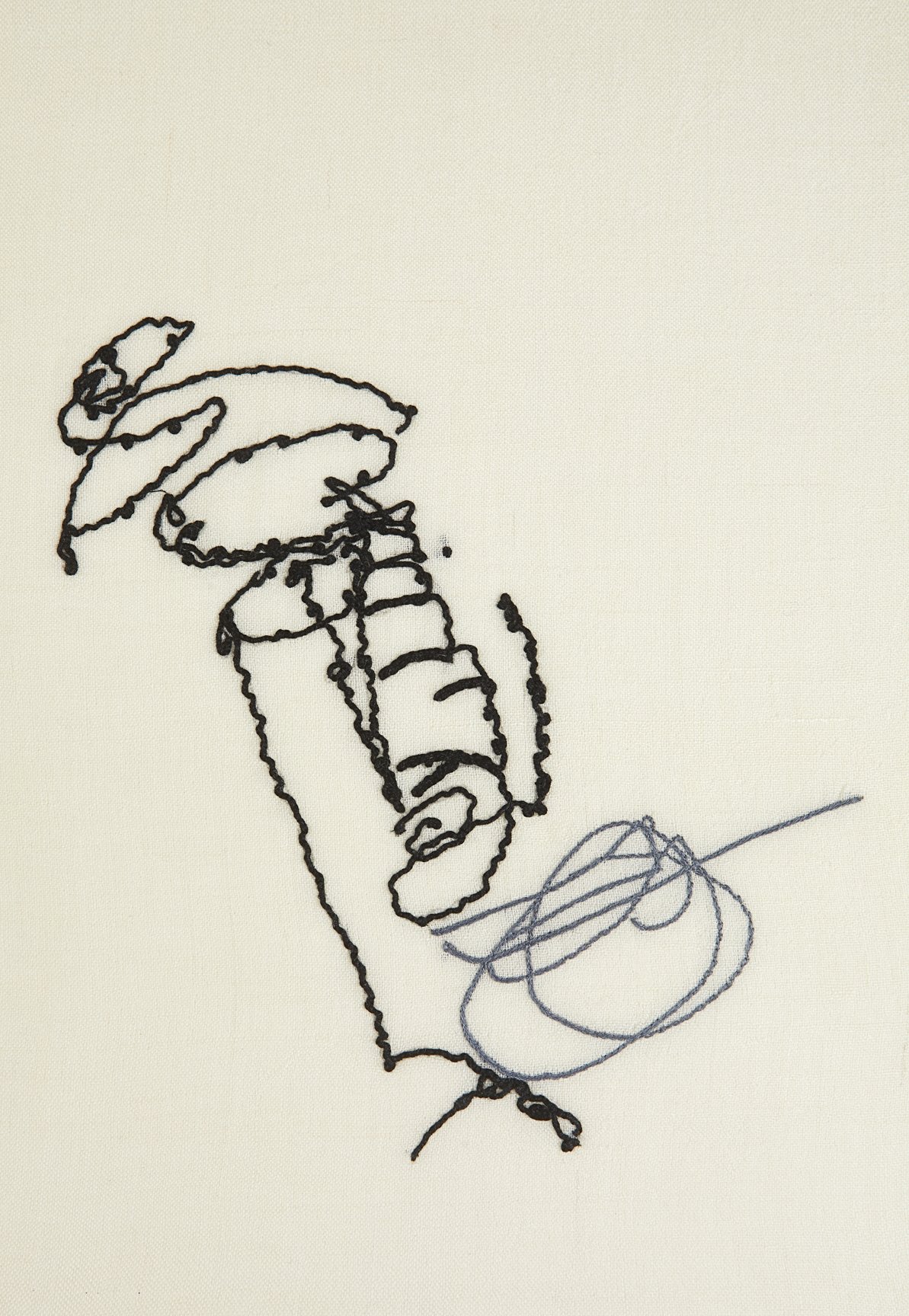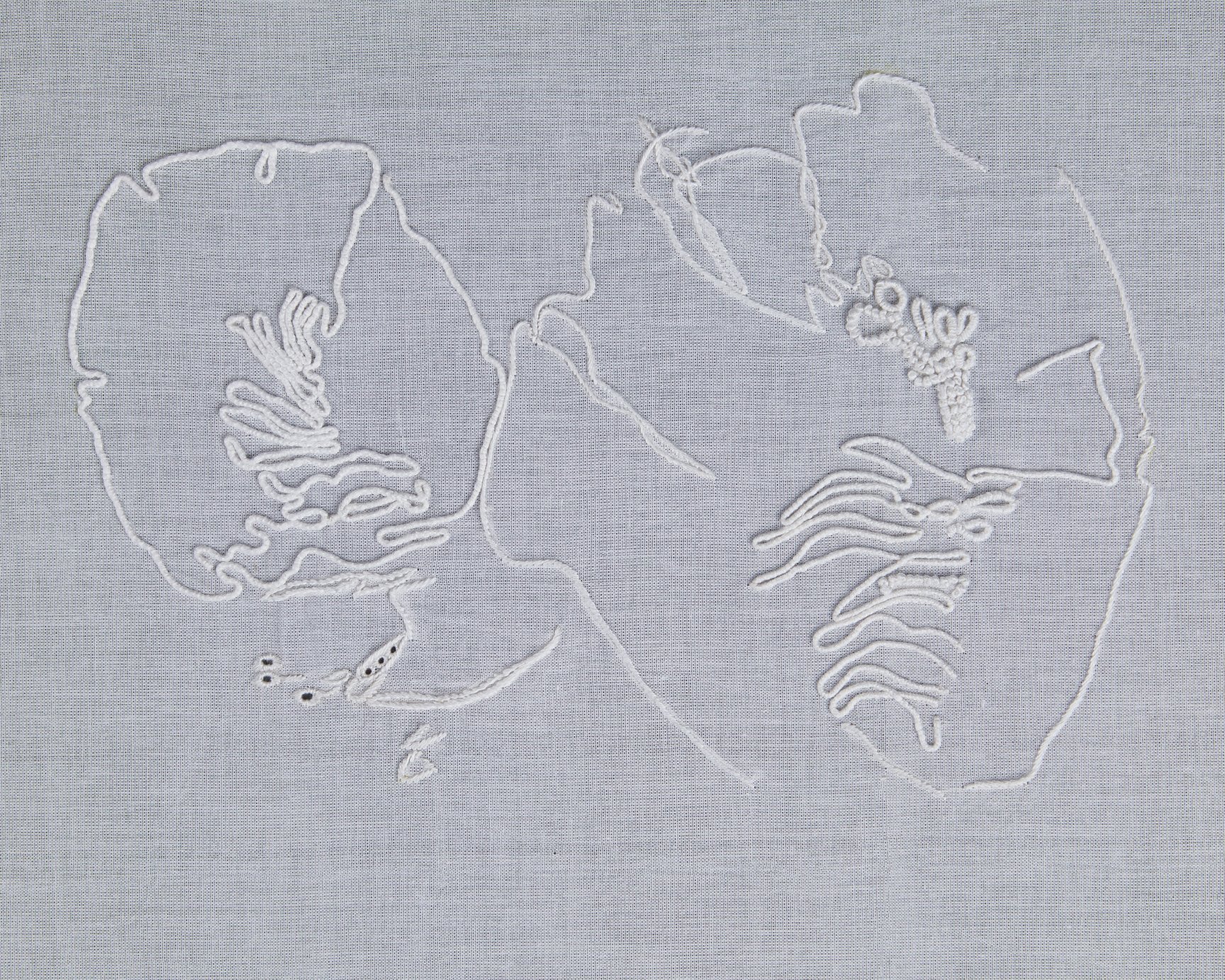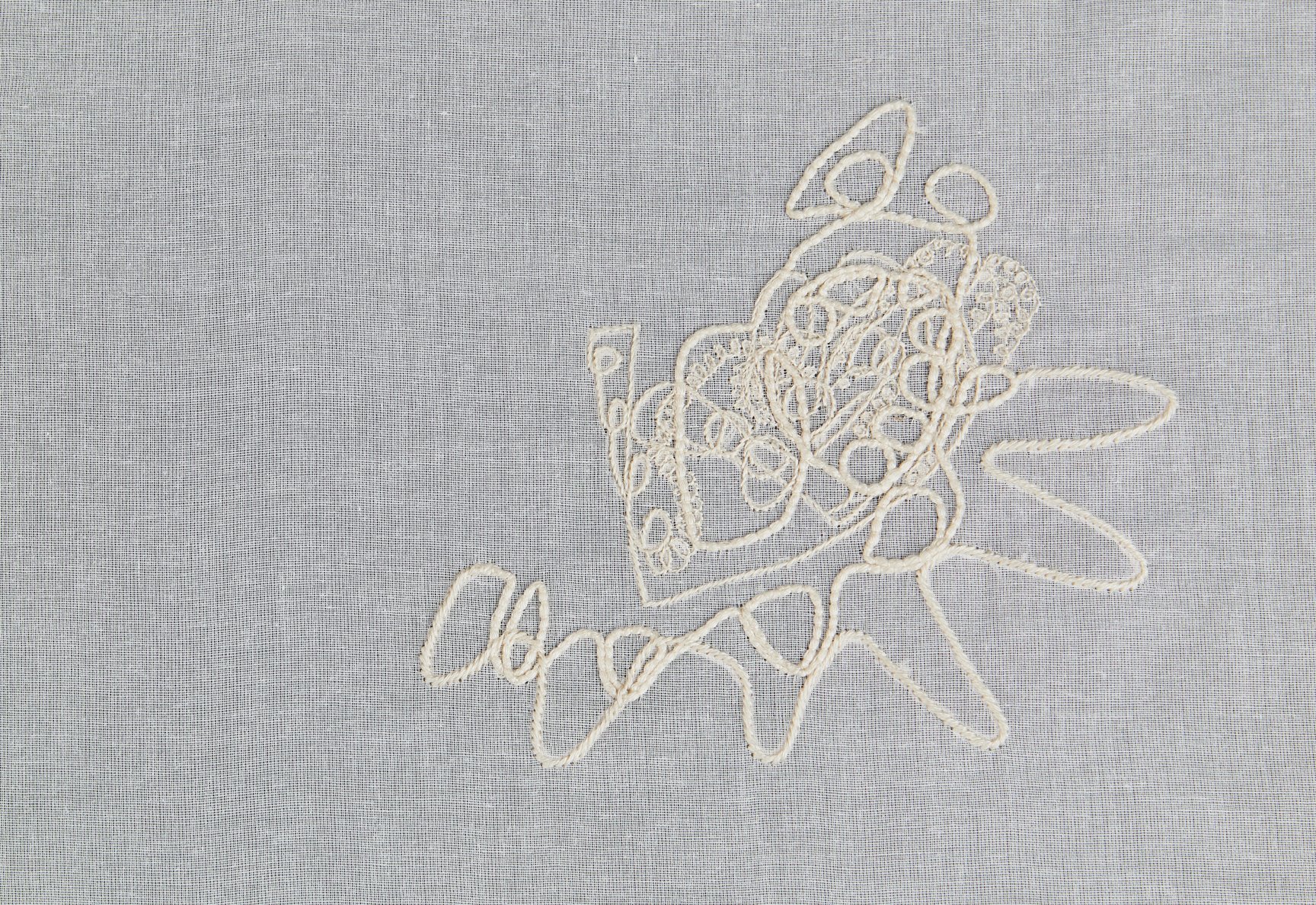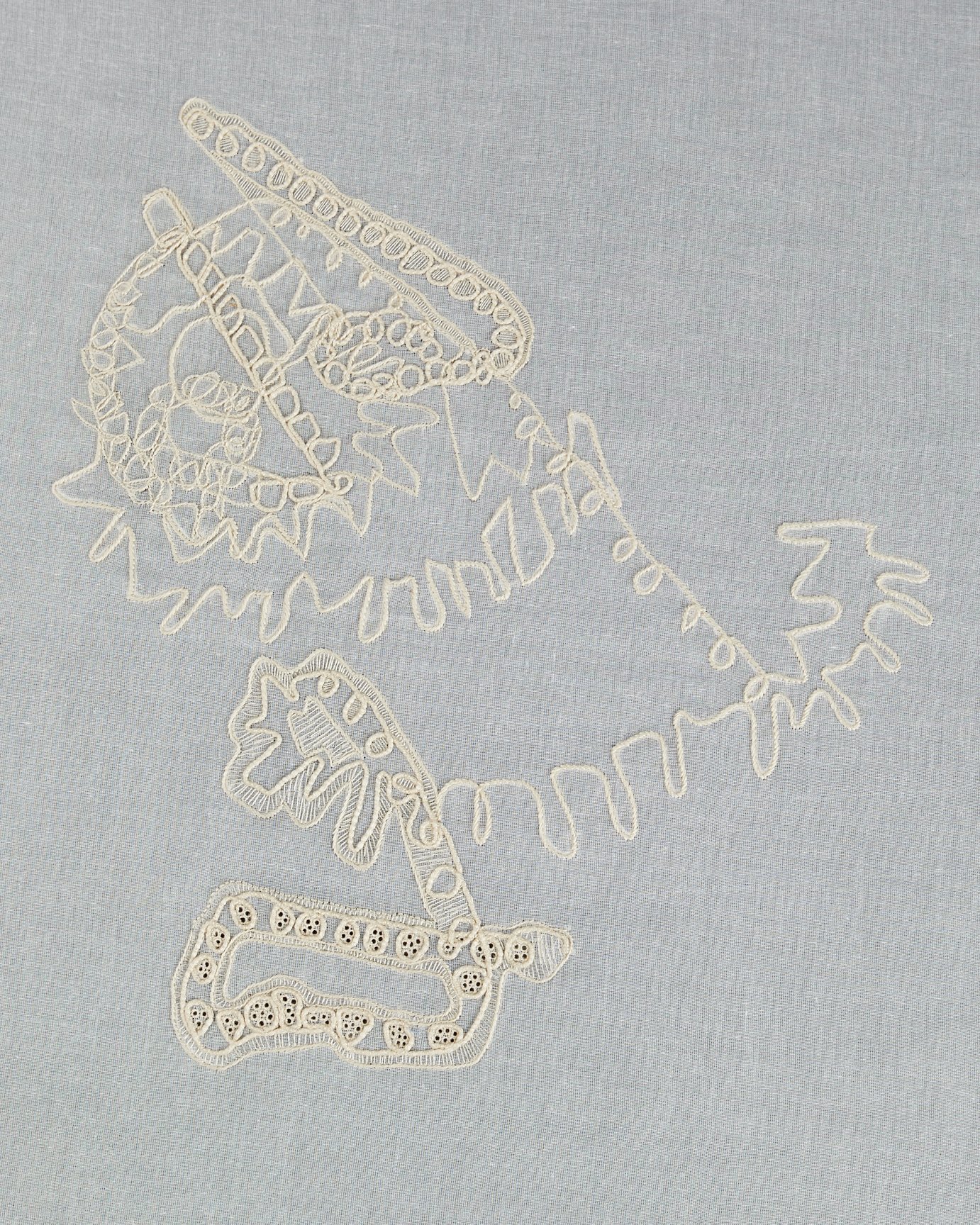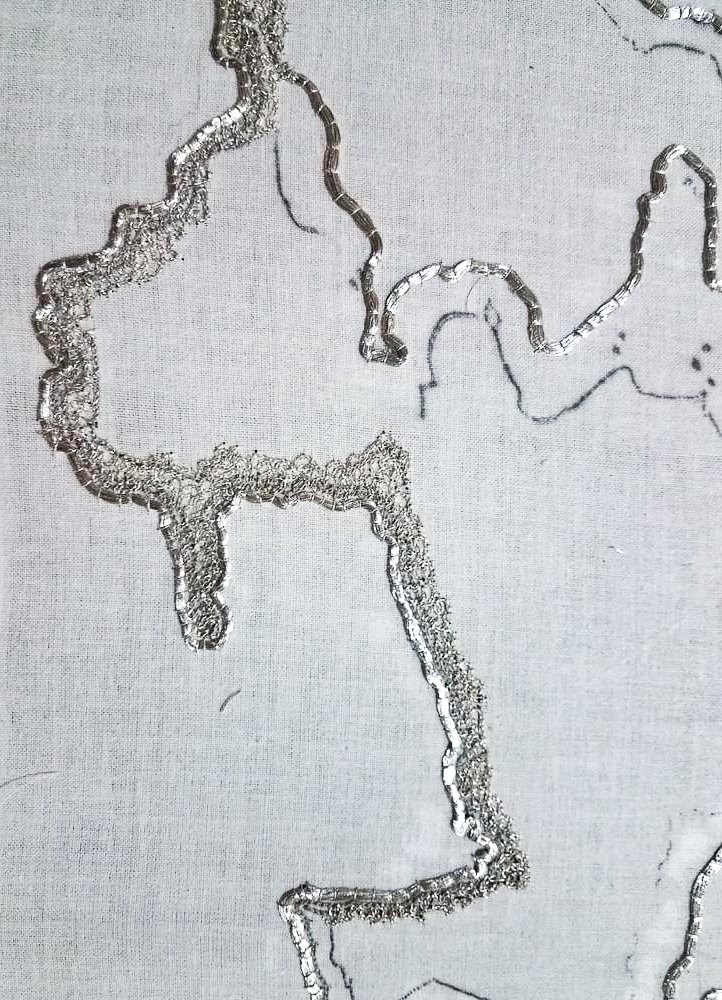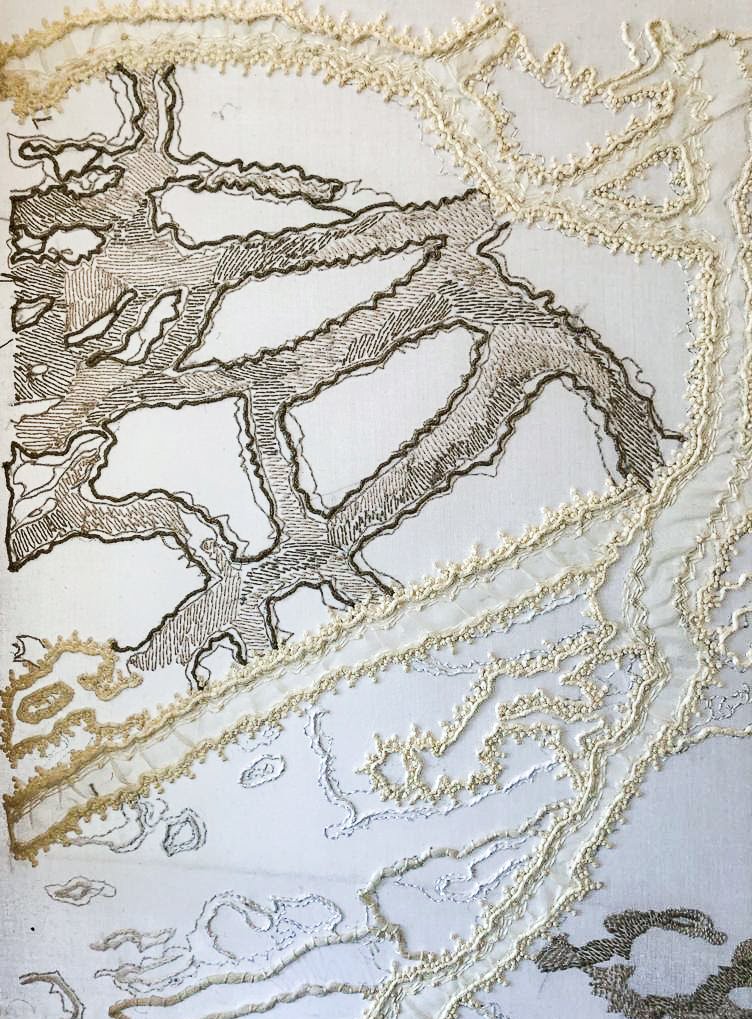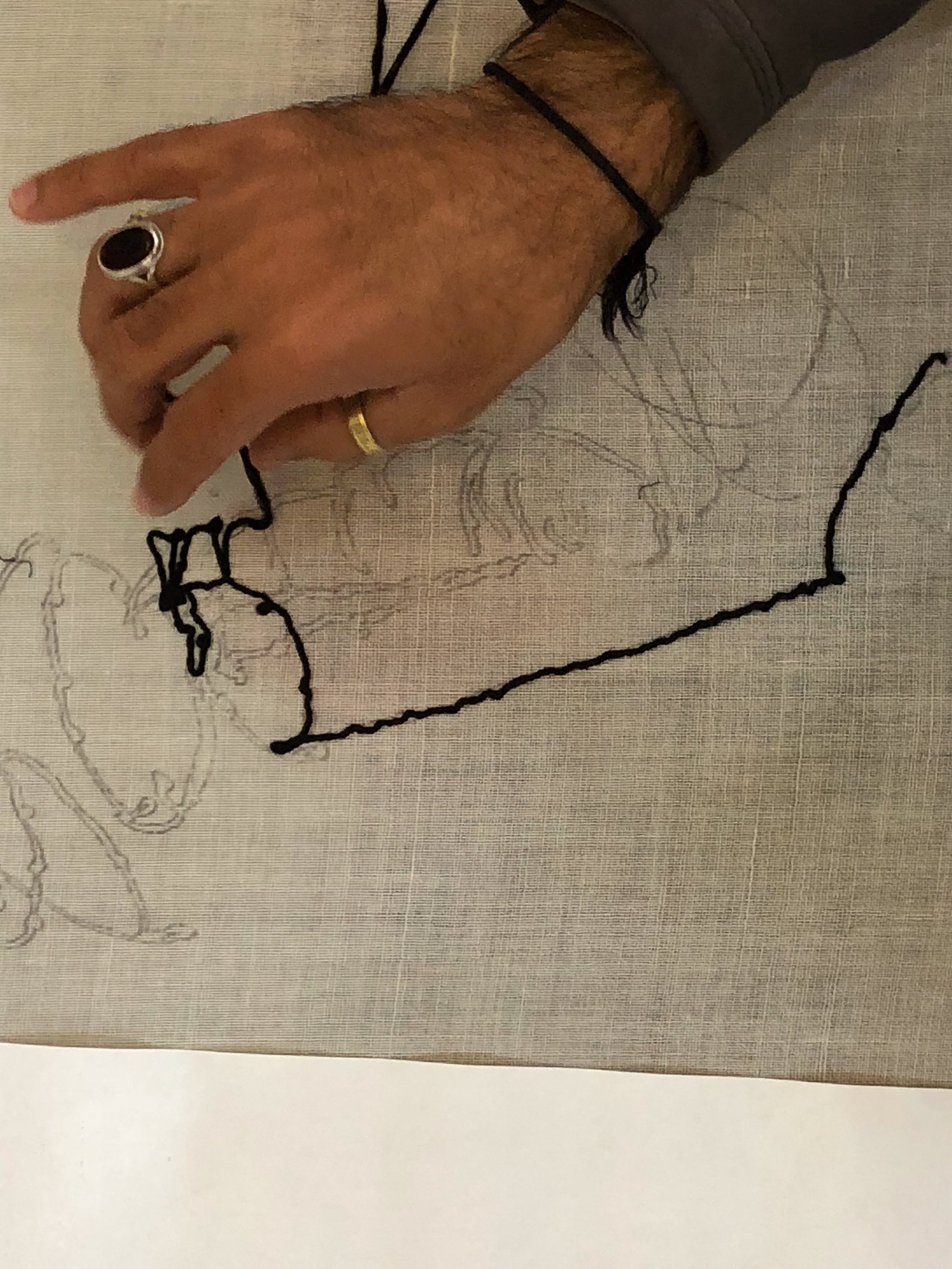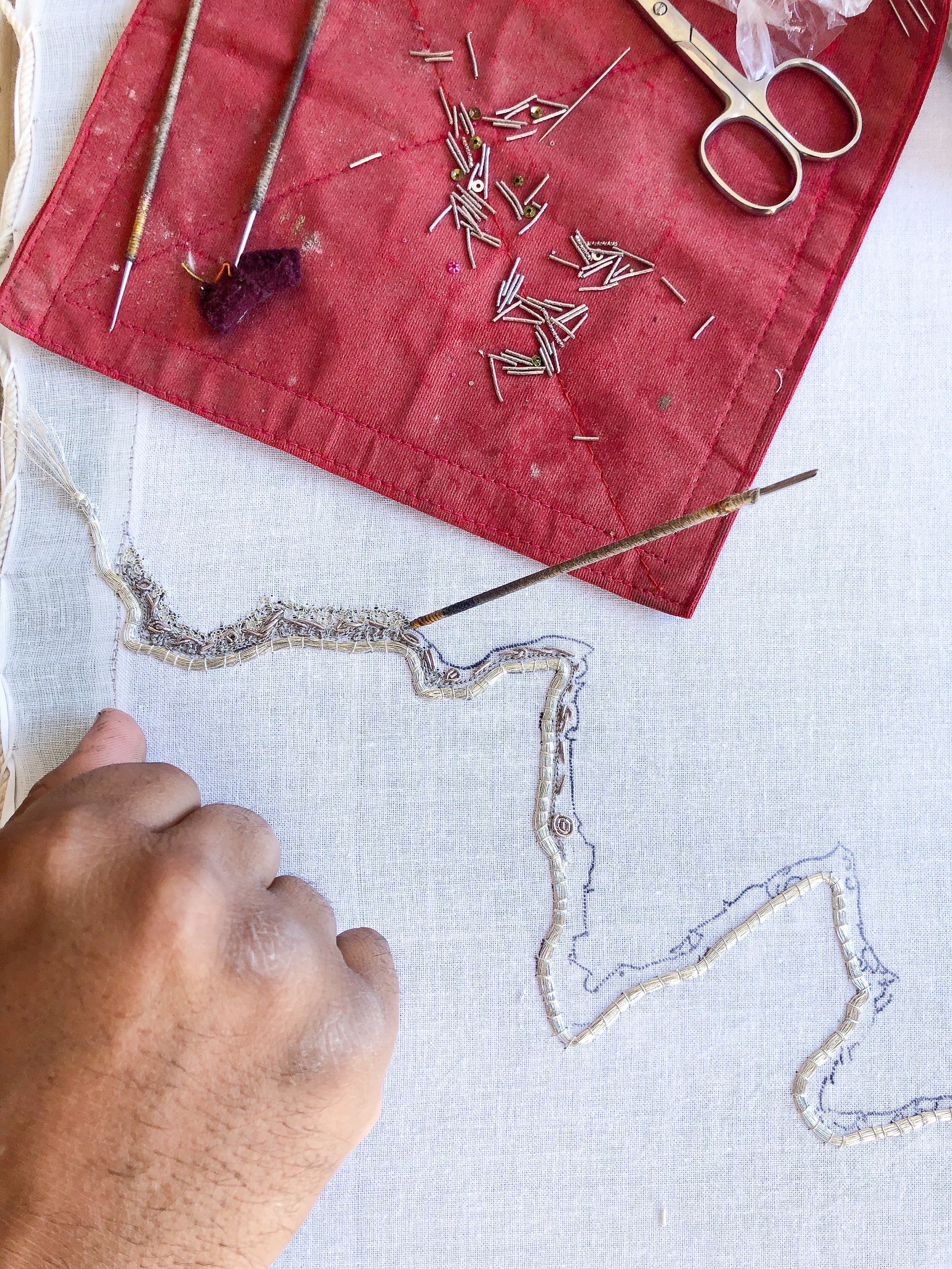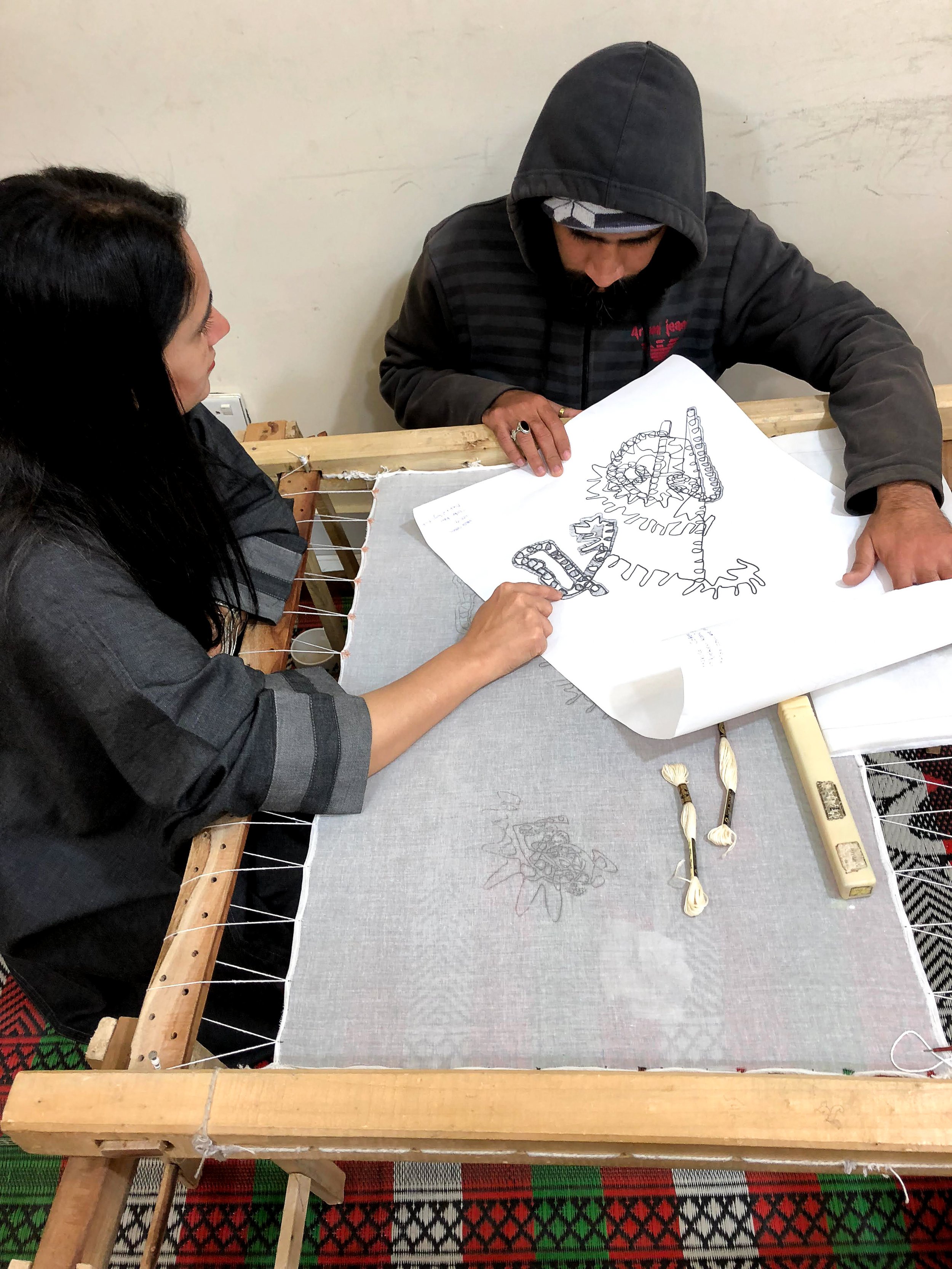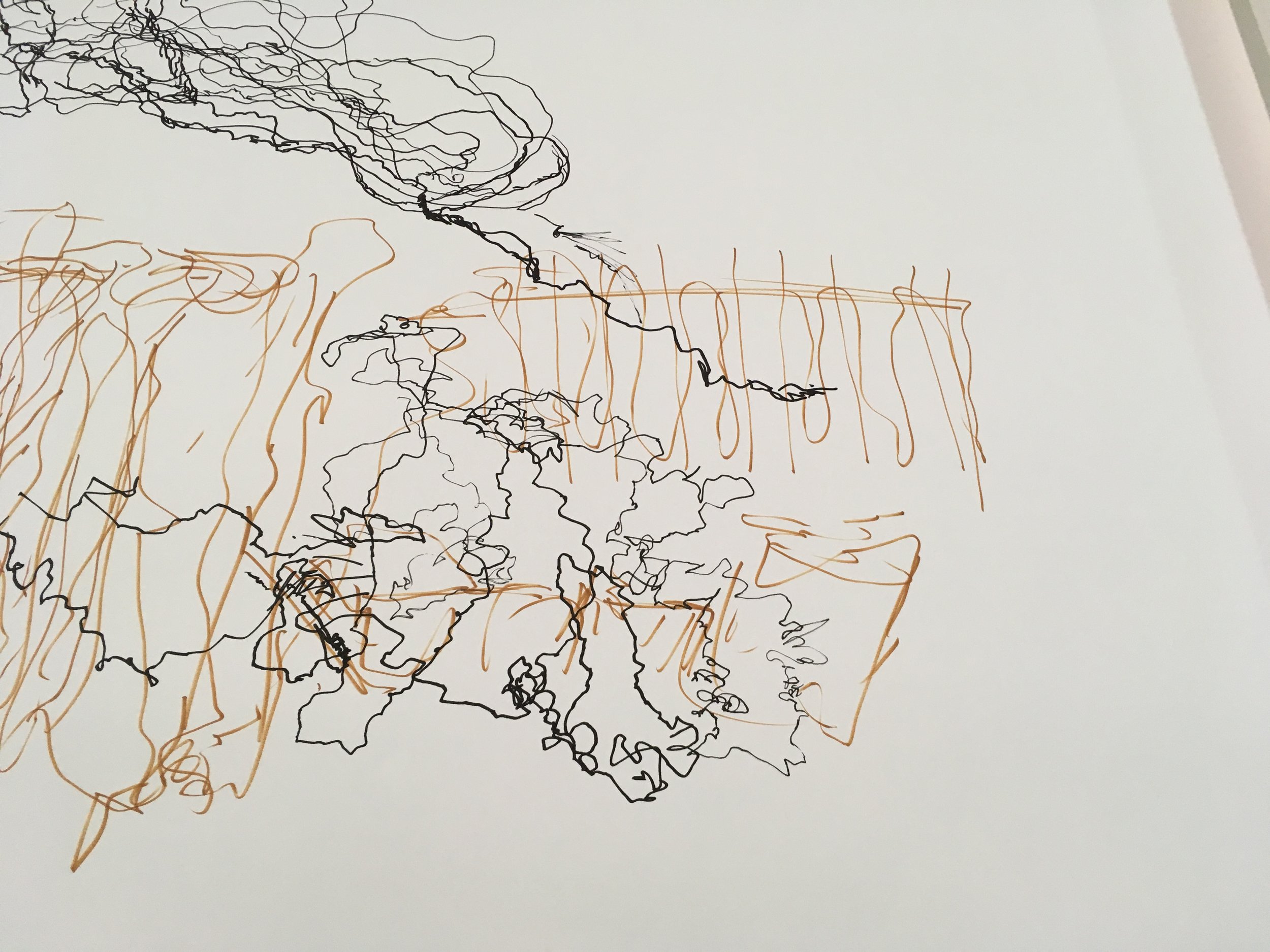Toronto/Pakistan:
Embroidery as Encounter
In 2014, a group of textile designers and artists gathered together at the Contemporary Textile Studio Co-op in Downtown Toronto to draw. For many years, most of them had been working with textile makers from South Asia and South America. They had worked to create sustainable textile-based social enterprises that would preserve and showcase local textile artistry. Yet, even with these ethical commitments, all had experienced dissatisfaction over how this kind of work is typically organized: the designer, based in the Global North, gets treated as the creative mastermind capable of inventing attractive and novel objects for a rich clientele, while artisans are seen as technicians, only there to produce these objects.
Gathering to draw was both a communal experience and a way to dismantle these barriers. Under the original guidance of Sheilagh Keeley, the group drew with their eyes closed, without looking at a piece of paper – all haptic drawings that were superimposed and collaged together.
How could these black and white, two-dimensional drawings be rendered into textile objects? Embroidery was a most interesting medium because it is three-dimensional and presents us with an immense variety of stitching techniques and materials.
In 2015, group member Munira Amin traveled back to Pakistan to work with three embroiderers at the Parahan Studio in Karachi. Munira was there to provide guidance and explained to the embroiderers that they were free to try any stitch techniques they saw fit to render these original drawings. At first, the embroiderers tried to translate the drawings as faithfully as possible. Quickly, however, they realized that they derived much more satisfaction and better results in creatively interpreting the drawings – choosing which lines to make more prominent, and playing with the thickness of stitch and thread to create lively and beautiful effects. Drawing into Threads was thus born: it is a collective, and while each member has their own expertise, each is also equal in the creative process.
Over the next few years, the group was able to repeat the process in 2017 and 2019, working this time with embroiderers in Islamabad. Overall, the collective explored how several traditional fabrics, from wool shawls to transparent cotton muslin, and different yarns, cotton threads and metallic threads, can showcase embroidery as a lively medium that can, in its own way, dismantle systematic barriers.
All the works presented here were made collectively; there is no single author, or lead, to any of them.
This project was supported by the Social Science and Humanities Research Council of Canada.
